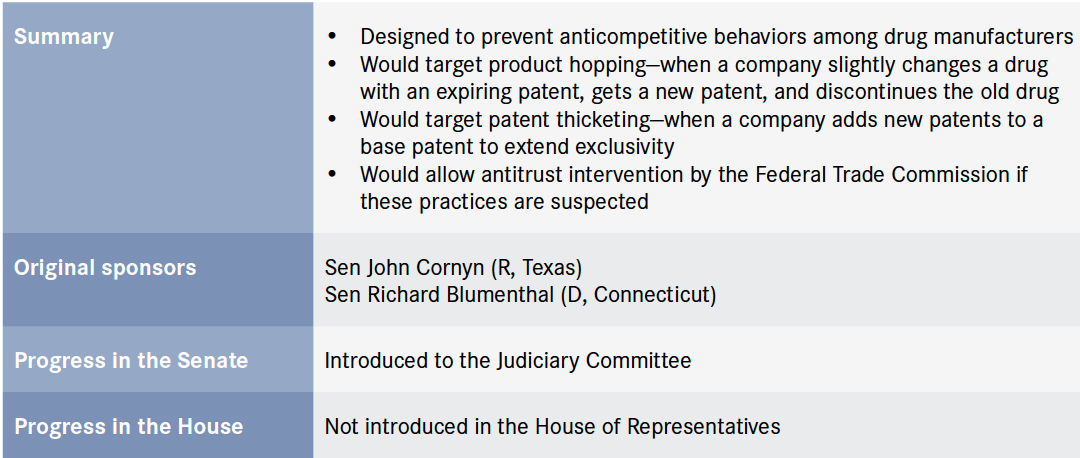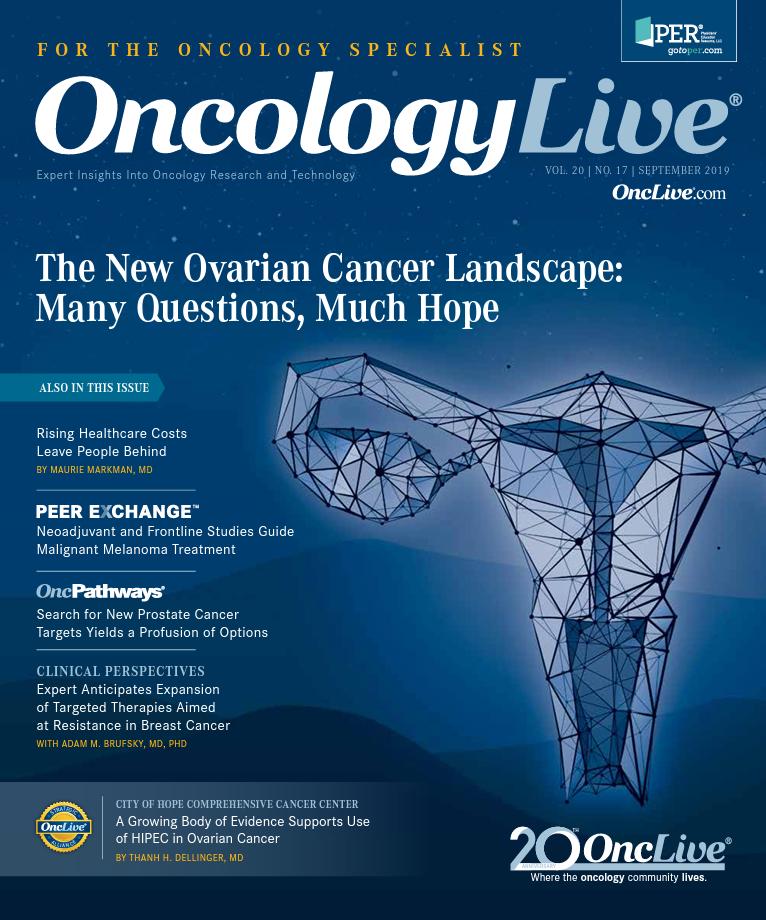Signs Point to Better Market Conditions for Biosimilars
Even though many challenges must be overcome before widespread adoption can occur, there is still much promise on the horizon for biosimilars.
Omar Hafez, MS, MBA

Omar Hafez, MS, MBA
The story of biosimilars in healthcare is a cautionary tale for all of the many stakeholders― manufacturers, distributors, payers, providers, and patients―who stand to benefit from these promising alternatives to biologics. The danger for the biosimilar market is that the healthcare landscape could become so challenging for manufacturers that they lose interest in developing these drugs, resulting in an unpleasant fate: a future with no biosimilars. Fortunately, we aren’t there yet. Even though many challenges must be overcome before widespread adoption can occur, there is still much promise on the horizon for biosimilars.
Early Success Despite a Slow Start
Although biosimilars are fairly new, these therapeutically similar versions of complex biologics have already demonstrated their value to the healthcare ecosystem. In November 2013, filgrastim (Neupogen) became the first oncology biologic to lose exclusivity and face competition. The first competitor, tbo-filgrastim (Granix), considered a biosimilar in Europe, is technically not referred to as the first oncology biosimilar in the United States because its manufacturer filed through the biologics license application pathway for biologic brands. Since then, 2 other filgrastim biosimilars have launched, creating an environment where these 4 products compete. Additionally, epoetin alfa (Procrit) and pegfilgrastim (Neulasta) have lost exclusivity, as has infliximab (Remicade) for inflammatory diseases. Recently, Amgen launched its biosimilars for bevacizumab (Avastin) and trastuzumab (Herceptin).
These biosimilars offer value not just in providing a less expensive treatment option but also in forcing innovators to compete to maintain market share. There is strong agreement that increased competition lowers healthcare costs, and biosimilars help achieve this goal. In each case mentioned, the market became more competitive, enabling providers to benefit from discounts and rebates and, ultimately, reducing drug costs. Through the second quarter of 2019, competition across the 4 drug families discussed saved the Centers for Medicare & Medicaid Services (CMS) over $250 million1 despite relatively low adoption.
The total savings for CMS are growing rapidly, with projections indicating that another $100 million could be added in the next quarter.2 As of the first half of 2019, the combined adoption of infliximab biosimilars was less than 10% of the total market for infliximab agents; this was after 2 years of biosimilar competition for this agent. Pegfilgrastim biosimilars are at around 15% adoption after almost a year. Only the filgrastim biosimilars are above 50% adoption today and then only with tbo-filgrastim included in the biosimilar mix.3
The next 12 months will be pivotal for oncology biosimilars. Trastuzumab and bevacizumab are expected to see additional biosimilar competitors enter, and rituximab (Rituxan) will also lose exclusivity. The highly anticipated biosimilars for these blockbuster drugs―all 3 made by Genentech and totaling over $9 billion in US sales4―are the first oncology therapeutic biosimilars to enter the market. These will further accelerate savings to the healthcare system.
Table. Affordable Prescriptions for Patients Act of 2019 (Introduced May 9)13 (Click to Enlarge)

Physicians have been apprehensive about adopting biosimilars but perhaps not for the reasons one would expect. Obviously, a clinical comfort level must be met before a physician will write a prescription, and that barrier is higher for a therapeutic oncology biosimilar than it is for a supportive-care drug such as filgrastim-sndz (Zarxio) or pegfilgrastim-jmdb (Fulphila). However, physicians also want assurance that they will be supported if they transition to a biosimilar. For instance, will the biosimilar manufacturer provide the same patient assistance services as the biologic? Will product supply be as reliable? Will payers cover the biosimilar? Will the manufacturer have representatives available to answer questions? All these factors can inhibit adoption.
Tackling Misinformation—Slowly
In May, the FDA released the final guidance on the pathway for “interchangeable” biologics, which may be substituted without involving the prescriber. Although this new guidance does provide developers more clarity, it is more applicable to insulin and self-injectable biosimilars such as for etanercept (Enbrel) and adalimumab (Humira). In oncology, where drugs are typically infused at the prescriber’s site of care, pursuing an “interchangeable” designation offers a manufacturer little benefit.
“Interchangeability” is one of the most confusing terms associated with biosimilars. It is intended to define a regulatory pathway that allows someone other than the prescriber (eg, a pharmacist) to substitute a brand product with an “interchangeable” biosimilar. Prescribers can write a prescription for a biosimilar that will be infused at their site of care without this designation. However, this has been lost in the narrative, and unfortunately, innovator companies have used this confusion to plant seeds of doubt with prescribers. For instance, a sales representative may ask, “Why would you write a prescription for a biosimilar that is not interchangeable?”
Despite all this, there is reason to be optimistic, as several organizations, such as the FDA and the Association for Accessible Medicines, are focused on improving the education and materials available to all stakeholders.
Expanding the Short-Term View The bigger challenge facing adoption―or the primary threat in our cautionary tale― is lack of payer support for biosimilars. In late 2017, Pfizer sued Johnson & Johnson (J&J), the maker of infliximab, the original drug, alleging that J&J’s contracts with payers were anticompetitive and blocked sales of infliximab-dyyb (Inflectra).5 Less than a year later, Pfizer was joined by Kroger and Walgreens, which filed their own claims against J&J alleging “unlawful exclusion of biosimilar competition.”6 Yet, according to Sanford C. Bernstein & Co, LLC (written communication, June 2019) as of 2019, infliximab remains the preferred drug over biosimilars by commercial payers for 60% of covered lives. Payers require a patient to first fail on infliximab before a physician can prescribe a biosimilar of the drug that did not work.
In oncology, the nation’s largest payer, UnitedHealth Group (UHG), recently made a similar deal with Amgen, requiring physicians to prescribe pegfilgrastim over the 2 available biosimilars. UHG will cover the biosimilars only if a patient first tries pegfilgrastim and treatment fails.7
Fortunately, these are short-term views. Longer term, it will become increasingly difficult for payers to justify blocking biosimilars as more and more of these drugs come to market. Payers also must be wary of shooting themselves in the foot. Biosimilars need to be successful to continue providing the competition that allows payers to negotiate discounts and rebates.
Addressing High Development Costs, Delayed Launches
Biosimilar manufacturers are increasingly revisiting their business models, with biosimilar programs being abandoned or scaled back by many, including early pioneers such as Sandoz, Pfizer, Boehringer Ingelheim, and Momenta.8-10 The cost of bringing a biosimilar to market can range from $100 million to $250 million.11 In addition, products are taking longer than anticipated to reach the market, partly due to approval delays. The FDA is addressing some of this, as the agency issues clearer guidelines on what is needed for approval. This should streamline clinical development and reduce the number of filings that are rejected and sent back to the manufacturer, sometimes requiring additional development.
Although approval delays have been a problem, delays caused by patent protection strategies and litigation tactics are a much bigger threat because they prevent biosimilar manufacturers from launching on time. For example, AbbVie’s composition of matter patent for adalimumab expired in 2016, but the drug remains protected because AbbVie generated more than 100 additional patents. All remaining manufacturers developing a biosimilar for adalimumab settled for a 2023 launch. Those that expected to launch in 2016 have a 7-year delay before they can start recouping their investment, and even then, adoption may not reach projections due to effective tactics by the innovator.
These strategies are not going unnoticed. In early 2019, a class-action lawsuit was filed by a union of grocery workers claiming that, collectively, they paid artificially high prices for adalimumab and have been deprived of the benefits of biosimilar competition.12 More recently, the Senate Judiciary Committee approved the Affordable Prescriptions for Patients Act of 2019, which aims to reduce the use of patent thickets as a way to delay competition (Table).13
A Wait-and-See Approach for Next Wave
In the first wave of oncology biologics to lose exclusivity (filgrastim, pegfilgrastim, epoetin alfa, bevacizumab, trastuzumab, and rituximab), it was common to see 7 or more manufacturers pursue each molecule. The market size was large, and the initial forecast for launch timing, pricing, and adoption supported a positive business case.
Looking ahead to the next wave of biologics to lose exclusivity, the biosimilar manufacturers are more cautious. Darbepoetin alfa (Aranesp), natalizumab (Tysabri), abatacept (Orencia), denosumab (Xgeva), eculizumab (Soliris), and aflibercept (Eylea) are blockbuster drugs with sales that have surpassed $1 billion. Most of these are expected to lose exclusivity between 2020 and 2025. But as of this date, no manufacturer has started clinical development on the first 4, and just 1 has started development on the last 2.14 This is a problem, given that it can take more than 5 years to develop a biosimilar drug. It likely means that for most of these, no biosimilar will be ready to launch by the time the innovators’ patents expire.
Biologics with less than $1 billion in sales are even less likely to be developed by biosimilar manufacturers. Cetuximab (Erbitux) is a perfect example of a molecule classified as “no longer protected” where no manufacturers have started developing a biosimilar.15 When asked why, manufacturers candidly report that they are unsure if there is a viable business case. However, rather than pulling the plug, they closely watch the outcome of the upcoming launches of biosimilars for bevacizumab, trastuzumab, and rituximab before proceeding with their biosimilars programs.
A Challenging But Promising Future
Despite a slow start, biosimilars have proved they create sustainable value in our healthcare ecosystem, and we must work on ensuring that they have a place in the future. Stakeholders in the value chain must realize that the long-term benefits and savings biosimilars offer will not occur if they persist with behaviors that inhibit growth, such as taking rebates from innovators and blocking competition. It is encouraging to see these behaviors being increasingly challenged and becoming more visible to the public.
Providing perspective for this article, Robert Rifkin, MD, medical director, biosimilars, McKesson, said that developing a healthy market for biosimilars is essential to make these cost-saving medicines available to the public. “We are about to enter into a new era with the emergence of therapeutic oncology biosimilars, and we have been provided with the foundation to realize the promise they bring to healthcare: to increase patient access and decrease cost,” said Rifkin, who is also an oncologist with Rocky Mountain Cancer Centers of Lone Tree, Colorado. “All of the many stakeholders― manufacturers, distributors, payers, and providers―must align their incentives to benefit the ultimate stakeholder: the patient.”
Despite the advantages biosimilars offer, they face an uphill battle. The FDA is moving toward clearer language on policy for bringing biosimilars to market; hopefully, that will remove some of physicians’ lingering doubts about efficacy and safety. Although these new policies are welcome, they are not sufficient to drive widespread adoption, because additional forces at play are causing manufacturers to reevaluate their biosimilar investments.




